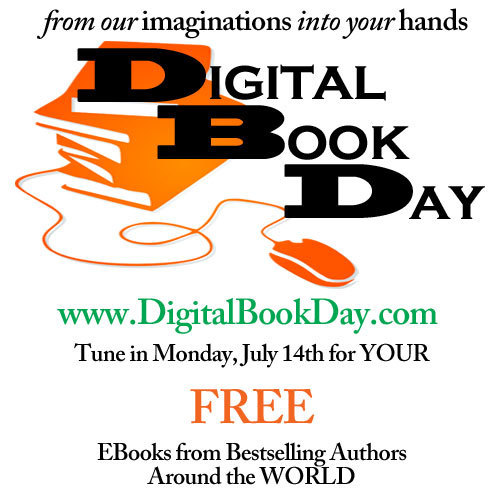Jane Friedman's Blog: Jane Friedman, page 161
July 10, 2014
The Latest Trends in the Indie Author Market [Smart Set]
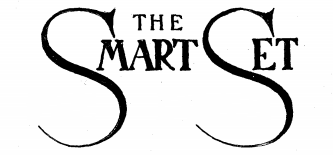
Welcome to the weekly The Smart Set, where I share three smart pieces worth reading about the publishing and media industry. I also point to issues and questions raised, and welcome you to respond or ask your own questions in the comments.
“To seek: to embrace the questions, be wary of answers.”
—Terry Tempest Williams
2014 Smashwords Survey Reveals New Opportunities for Indie Authors by Mark Coker
Every year, the founder of Smashwords, a major ebook distributor for self-published authors, crunches the company’s sales data and points to trends in the digital book market. I love the transparency, which is hard to find these days. His findings include:
Readers prefer longer ebooks. It appears there might be an advantage to selling books that are 100,000 words or longer—and a disadvantage to writing in the 45,000–60,000 word range.
Free as a marketing strategy still works, but not as good as it used to. Coker thinks the usefulness of “free” will continue to decline.
Pre-orders yield a sales advantage. Unfortunately, Amazon KDP doesn’t allow self-pub authors pre-order capability. Other retailers do, creating a strong motivation against using KDP Select (being exclusively sold through Amazon).
Series yield a sales advantage, and longer series books sell better. Coker says, “Successful novella writers might achieve even greater success if they write full-length. The data appears to suggest that series books under 50,000 words might create friction that makes readers incrementally less willing to buy.”
Nonfiction authors are underpricing their works. I’ve thought this for a long time, having worked in nonfiction traditional publishing for 10+ years. Nonfiction can carry a higher price than fiction, regardless of how it’s published, if the information is unique and not to be easily found elsewhere.
Read the full post here, along with the 100+ slides from Coker’s report.
Thoughts & questions:
A growing problem for indie authors appears to be the declining ability to get a sales bump or greater visibility by pricing at “free.” That said, series authors appear to (still) have great success with that strategy when they make the first book in the series permanently free as a way to hook people into the series. What strategy will authors fall back on once “free” doesn’t get the attention needed?
Will we start to see longer books? And will traditional publishers end up following the indie author lead?
Still wondering if Amazon KDP might announce pre-order capability if you sign up for Select.
UK Author Income Survey: Another Publishing Bombshell by Porter Anderson
This week, everyone has been buzzing about the UK author income survey that shows a dramatic decline in earnings for professional authors. Porter Anderson, over at FutureBook, does an in-depth analysis of that survey, and compares it to the overall landscape of reporting on author earnings (e.g., Hugh Howey’s efforts). It’s an excellent way to get up to speed on what we know or don’t know.
Some people have rightly questioned the validity of this UK survey; the best summary of its problematic findings are well highlighted at The Digital Reader.
About the only conclusive statement I can make about the matter is: When it comes to how much money writers are making, it all depends on whom you ask. I have yet to see any objective or defining report.
Thoughts & questions:
Who or what do you think comes closest to accurate insight into author/writer earnings?
Big Ideas From Big or Small Data by Pete McCarthy
This is a Slideshare presentation from book marketing guru Pete McCarthy. While some of it might be over the average author’s head (or even mine), it’s still a fascinating look at how to better market books in digital environments; one slide overviews the many services that can be used to gain audience insights for marketing. Go take a look.
Thoughts & questions:
What are your favorite digital tools for analyzing your social media presence or figuring out the demographics of who you reach online?
The post The Latest Trends in the Indie Author Market [Smart Set] appeared first on Jane Friedman and was written by Jane Friedman.
July 9, 2014
5 Research Steps Before You Write Your Book Proposal
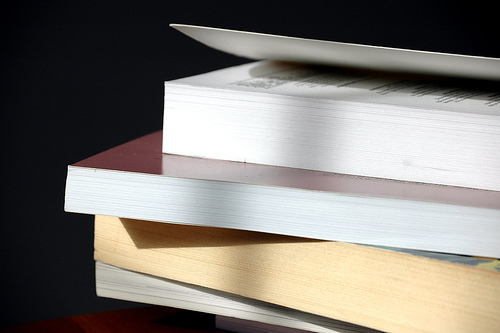
by Suttonhoo / via Flickr
Note: Starting July 21, I’m teaching an 8-week course on how to write the nonfiction book proposal. It includes:
3 hours of screencast lectures
8 research worksheets
a book proposal template
sample book proposals
a critique from me on either your book concept or your full proposal (very limited seats for the full critique)
Click here for more information and to register.
Writing a nonfiction book proposal—a good one—requires not only sharp clarity about your idea, but also how that idea, in book form, is relevant and unique in today’s market. Some authors have a very deep knowledge of the community surrounding their topic, and understand the needs of their audience. Others do not.
Either way, you’ll have a much easier time writing your proposal if you take time to conduct market research beforehand, as well as an analysis of your existing reach to your readership.
Step 1. Explore and understand competing titles.
Searching for the titles your book will compete against is one of the easiest ways to begin your research process. Visit the bookstores in your area—the library, too. Go to the shelf where you would expect your future book to be placed. What’s there? Study the books closely and take notes.
Be in-depth about this; use this worksheet to be thorough.
After you finish combing the bookstores and libraries, check specialty retailers that might carry books on your topic (e.g., Michaels for arts and crafts books).
Finally, do an online search, beginning with Amazon; then try Google. Search any other sites that might be important to your book’s audience.
Step 2. Research the non-book landscape.
It would be a mistake to think your competition is limited to print book titles. Today, your greatest competition may be a website, online community, or well-known blogger. Do a thorough Google search for digital content and online experts serving the same audience as you. Is it easy to get needed and authoritative information? Is it free or behind a pay wall?
Don’t stop at Google. Also search YouTube, app stores, iTunes podcasts, and online communities relevant to your topic. Look for online education opportunities, if relevant.
Understand how your audience might be fulfilling its needs for information from online and multimedia sources—and also from magazines, newsletters, databases, and events/conferences!
This information may or may not end up in your proposal, but the upside is this: you’re developing an amazing map and resource of how to market your book when it’s published!
Step 3. Study the authors and influencers you’ve found.
As you go through Steps 1 and 2, you’ll uncover authors, experts, and influencers on your topic. Just as you studied the books and media, dig deep into the platform and reach of these people. How do you fit among them? How will you set yourself apart? Are there hints about how you need to develop your own platform to be competitive in the eyes of a publisher? Here’s a worksheet to help you ask the right questions.
Step 4. Pinpoint your primary market.
By this point, you will have collected a lot of valuable information about the print and online landscape related to your topic. You will probably have some notes about the type of audience or demographic being served. (If not, go back and look for clues as to who the books or digital media appear to be targeting.)
It’s a big red flag to any agent or editor to say that your book is for “everyone.” Maybe it could interest “everyone,” but there’s a specific audience that will be the most likely to buy your book. Who are those people, and how/where can you reach them? Again, Steps 1–3 have probably given you some pretty good hints. If not, try asking the following:
What social media outlets seem to be most important, active, or relevant for your target audience? Where does your audience gather online? Search for trend articles, or refer to a site like Quantcast, to find out the demographics of that site or social media outlet.
What else does your audience read? What do they watch? Who do they listen to in the media? This can get you very close to a profile of your target readership.
Search Google Trends for keywords related to your topic. What do you find? Are there any trend articles, statistics or research about your topic or your perceived market that are helpful in profiling your target reader?
The better you know your target reader (or primary market), the better you’ll able to build a proposal that speaks to why anyone cares about what you’re writing. Furthermore, a really intimate understanding of your audience often leads to a better book.
Step 5. Analyze how you reach readers.
This is where you look at your platform and measure how well you reach your target readership, through the following:
Your website/blog
Email newsletter
Social media
Speaking and teaching
Professional memberships or affiliations
Regular media gigs (e.g., columns)
Partnerships or special connections, especially those that might influence media coverage or buzz
Any other tools you have!
This is a good time to refer back to Step 3, and review the authors and influencers you’ll be competing and/or collaborating with. You want to look like you measure up well but also have something fresh or different to offer.
Your platform directly informs the marketing and promotion plan that’s included in your proposal. The best marketing campaigns begin with what you have in place today, not what you hope to happen (e.g., Oprah calls).
Also, being thorough in describing your platform (if only for yourself) helps you more effectively develop a marketing plan before your publication day, and collaborate with your publisher on marketing and publicity. For more help on this, download my worksheet on detailing your platform.
Note: Starting on July 21, I’m teaching an 8-week course on how to write the nonfiction book proposal. It includes 3 hours of screencast lectures, 8 research worksheets, a book proposal template, and sample book proposals. You also receive a critique from me on either your book concept or your full proposal. Click here for more information and to register.
For more on book proposals:
Start Here: How to Write a Book Proposal
How to Write a Competitive Title Analysis by Nina Amir
Nonfiction Book Proposals in the Digital Age: my article for Writer’s Digest magazine
The post 5 Research Steps Before You Write Your Book Proposal appeared first on Jane Friedman and was written by Jane Friedman.
July 7, 2014
Digital Book Day: A New Marketing Effort By Bestselling Author C.J. Lyons
Over the holiday weekend, C.J. Lyons, a bestselling hybrid author, launched a new initiative called Digital Book Day, partly in response to the discontinuation of World Book Night USA.
For those unfamiliar with World Book Night, it was a joint marketing effort to spread the love of reading by giving away thousands of books in a single day. Publishers donated copies and authors waived their royalties. Last year, in the United States alone, 500,000 books were given away. Unfortunately, the initiative doesn’t have the funding to continue in the U.S.
On July 14, Digital Book Day will operate on much the same premise as World Book Night, only digital copies will be given away to readers rather than physical copies. All authors are welcome to participate; click here to submit your title.
C.J. was generous enough to take time to answer a few questions about the initiative.
Your idea picks up where World Book Night left off. Tell us about your experience with it. And why were you sorry to see this event fold?
While I was never lucky enough to be selected to participate in World Book Night, I simply adored the idea of writers putting books into the hands of readers who might not normally have the resources to buy them. After all, isn’t that what authors live for? Seeing our worlds embraced by new readers?
When I heard the news that World Book Night USA was over, it saddened me. And it came on the heels of so much upheaval and distress in the publishing industry that instead of addressing the issue with more rhetoric and empty words, I decided to take action.
After all, thanks to digital publishing, authors (traditionally published or self-published) have a less expensive and more efficient way to gift books to readers via e-books. I myself have given away over 50,000 print and e-books in the past five years—and it’s always, always, always led to new readers finding me, not to mention a ton of fun for me to do, kind of like Christmas all year round! So I thought, why not a self-funded Digital Book Day?
One day, hundreds of authors and free books, all to celebrate our readers!
You already have a super-long list of authors who are participating, and I’m sure many more are to come. How did you get the word out so quickly? What has community response been like?
The idea for Digital Book Day only came to me three days ago, so it’s been a whirlwind getting the site live and creating graphics, etc.
Yesterday, I finally had time to post a few notes to writers’ groups I’m a member of, such as the Alliance of Independent Authors and Sisters in Crime. I also reached out to a few individuals such as Joanna Penn of the Creative Penn and the guys from the Self Publishing Podcast. I told them what I’d dreamt up and asked them to help spread the word, and we already have over 80 books listed!
I’ve always known you as an author devoted to serving readers, and this effort is no exception. If I were working at a big publisher, I’d want to partner with you on this! Has any interest been expressed from inside the industry? (Maybe it’s too early for that?)
I would love to partner with anyone interested in helping readers fall in love with new authors! With the holiday weekend here in the States, there hasn’t been time for any traditional publishers or distribution venues to respond, but several small presses have, including Bob Mayer’s Cool Gus Publishing.
I decided to make Digital Book Day venue neutral. It’s open to any author as long as the link to download their free offering is live on Monday, July 14th. It can be via their website, a digital free giveaway site, or one of the many e-book distribution venues that allow free books.
Readers can download free books on July 14; is there any catch? Do they have to give their email address, fill out a form, or do anything special?
It depends on the author. A lot of folks are using links to Smashwords, iBooks, Kobo, and Amazon for their free books, but several are hosting their giveaways on their sites in exchange for an email address or newsletter sign up.
The Digital Book Day site will act simply as a portal for readers. Just as with selecting any book, it will be up to the reader to decide if the book and/or venue where it’s hosted is right for them.
Will you be able to count how many books are given away? Either way, how do you expect to measure the impact?
I’ve set up analytics on the site that will tell us how many visitors we have and how many times a link is clicked. The links go to the download sites, so that should be a close approximation of how many books are actually given away.
As for impact—hundreds of free books are given away every day, so this isn’t an industry-changing event. But many of the authors participating in Digital Book Day don’t usually give away free books every day (the so-called permafree books) and some of these deals are exclusive, not found elsewhere—including a few books that are advance copies and not even released yet!
In other words, I think the authors participating in Digital Book Day are really enjoying the chance to reach new readers and delight them with their offerings as we celebrate our shared love of storytelling.
Go read more about Digital Book Day.
The post Digital Book Day: A New Marketing Effort By Bestselling Author C.J. Lyons appeared first on Jane Friedman and was written by Jane Friedman.
July 3, 2014
Has Anyone Figured Out How to Marry Digital Media and Literature? [Smart Set]

Welcome to the weekly The Smart Set, where I share three smart pieces worth reading about the publishing and media industry. I also point to issues and questions raised, and welcome you to respond or ask your own questions in the comments.
“To seek: to embrace the questions, be wary of answers.”
—Terry Tempest Williams
5 Myths About the New Era of Publishing by Adam Lefton
An excellent question is posed by Lefton: What if some of our common beliefs about how to marry digital media and literature are misguided?
Lefton’s piece is inspired by the downfall of Byliner, often celebrated as an innovator and potential business model for the new digital era of publishing. Yet cracks in the facade of that company—as well as others—are showing, and Lefton identifies five potential myths that have been sold about digital media + literature, including:
Spotify and Netflix are strong models for literature. Nope.
Longform journalism should be the backbone of digital innovation. Maybe not.
Big names matter. Not really.
Wait, what does it even mean to PUBLISH these days? A good question.
I highly recommend reading the full piece over at Litragger.
Thoughts & questions:
What lessons can we learn from Byliner?
What role do subscription services play in the future of books/literature?
How well can we apply lessons from film and music industries to that of the book industry?
Being a publisher doesn’t seem to add much value these days. (Does it? What does?)
Why the Current VC/Media Marriage May Be Bad for Journalism by Nicholas White
Venture capitalists are taking a greater interest in investing in media companies or journalism-based startups. White argues this isn’t necessarily a good thing, for several reasons: (1) such ventures cost a lot of money up front, (2) they scale only up to a point, (3) they take time to become profitable and sustainable, and (4) exits are not as obvious. Read the full post.
Thoughts & questions:
I have only grim thoughts reading this; having worked for a corporate media company during three changes in ownership (to a series of venture-capitalist firms), the short-term thinking that often prevails is rarely beneficial for the future of the business, the staff, or the readership.
99% of what writers are hearing in terms of advice comes from 1% of authors by Bob Mayer
An excellent reminder from traditionally and indie published author Bob Mayer:
… we want to hear from success stories, not failures. Still, if it were easy to replicate those successes, then everyone would be doing it. Plus, many success stories feel their path is the path, and don’t take into account not only other paths, but the changes in the business and even in story telling since they started. … Does what the 1% say regarding their career path even apply any more? Things are different now than they were just six months ago. … We hear “This is the way to do it!” shouted, but is it for you?
Thoughts & questions:
There are many smart authors (and industry experts) sharing their advice on blogs, at writing conferences, and in publications. Who do you read that offers a 360-degree view—someone who can really put themselves in the shoes of a writer who is just starting out? Share in the comments.
The post Has Anyone Figured Out How to Marry Digital Media and Literature? [Smart Set] appeared first on Jane Friedman and was written by Jane Friedman.
July 1, 2014
The Argument for Ambiguity in Your Story

To create a story that feels as if it could leave the page: That’s the dream of many writers. But to pull it off means leaving space for the reader. Celeste Ng, author of the newly released Everything I Never Told You, explains:
… you need to leave a few unmapped places so the characters can step beyond the boundaries you’ve sketched, a few strings untied so that the puppets can move freely without your hand. In other words, you need a little ambiguity: a space, however small, for the reader to fit into the piece. A story needs a little room for the reader to interpret, to bring in his or her own perceptions and conceptions.
But, you might ask, what is the difference between meaningful ambiguity and authorial indecision? Read Ng’s full essay at Glimmer Train to find out.
For more on writing craft & technique:
Smash the Blasted Scales by Julian Zabalbeascoa
One of Your Most Valuable Writing Tools by Sandra Hunter
The post The Argument for Ambiguity in Your Story appeared first on Jane Friedman and was written by Jane Friedman.
June 30, 2014
Both Sides Now: A New York Editor and Author Goes Indie

by Tom Borowski / via Flickr
Today’s guest post is by author Leslie Wells.
I’ve been on both sides of the publishing desk—as an acquiring executive editor for several decades, and as an author. The experience has provided insights that I wouldn’t have had otherwise, and made me more sympathetic to the nerve-wracking process of trying to get your book published.
First, let’s look at the editor’s side. An editor’s career hinges on acquisitions. If she doesn’t acquire eight to ten titles per year, then her job is on the line. So an editor is constantly trying to buy books; but that’s not easy as it sounds. Before the weekly meeting, you have to get at least one other editor to read—and like—the manuscript you’re trying to acquire. Then you have to pitch it to an overworked bunch of colleagues who are also trying to fill limited slots on the next list. Most of all, you have to convince your boss, the editor-in-chief—who may or may not have had time to look over your project in the three hours he spent cramming the night before—that it has merit.
If you pass “Go”, the next hurdle is the acquisitions meeting. There are pro formas to fill out: the profit and loss statements that project how many units the book will sell in all formats over a period of time, and which the sales and marketing directors have to sign off on. At times these P&Ls require wild leaps of imagination.
Books are often dead on arrival at the acquisitions meeting, for the following reasons:
The author doesn’t have a platform (an internet following, TV show, speaking gigs).
The book reminds someone of a book that came out last year, that didn’t work.
The sales director had a bad commute.
The marketing director doesn’t get along with the sales director—so any project he likes, she loathes; and vice versa.
If the stars align and the book isn’t shot down, you are then allowed to plug the new (vastly reduced) projected sales figures into your pro forma, and get the new (vastly reduced) advance amount approved. Finally you’re ready: a $35,000 offer is burning a hole in your pocket.
You take a deep breath and call the agent. Who tells you that the book was pre-empted for six figures, two hours ago.
All this is to explain why, as an author, it can be so hard to get your book published. It was extremely difficult even ten years ago, and is even more so now. So if your carefully revised, lyrically titled, wonderfully imagined novel doesn’t sell, please don’t blame the editor. She may have loved your book, but she probably wasn’t allowed to acquire it.
However, this doesn’t mean it’s the end of the road for you as an author. I’ve experienced being published from both sides too: by a traditional publishing house, and now as a self-publisher. I’m going to describe each experience.
My Traditional Publishing Versus My Self-Publishing Experience
My first novel, The Curing Season, was pre-empted by Amy Einhorn (who went on to publish The Help). Amy’s editing was insightful and thoughtful. There wasn’t a suggestion that wasn’t careful and intelligent; I loved the whole process, and felt very lucky. The art director came up with a beautiful, appropriate cover and the publisher sent me on an eight-city tour (back in the day when authors got sent on tours). The book came out during a time when newspapers and magazines were either killing or drastically reducing book coverage; since social media hadn’t happened yet in the early 2000s, it was difficult to garner much attention. The book did receive some very nice reviews, and overall it was a very positive experience.
For my new novel, Come Dancing, I thought it would be interesting to take a different approach. So many of my author friends are choosing to self-publish that after checking out traditional publishing options, I decided to give it a whirl. The process has been exciting, exhausting, and empowering. First, I got the manuscript in the very best shape I could, which took two years. Next I hired a freelance editor to edit the first draft, and later on, a second editor for the third draft. The revision process took place over a year and a half, then I asked a few friends to read the manuscript and comment. Once again, I revised accordingly. When I couldn’t bear to read it one more time, finally I was done.
Now for the fun part: I chose a designer for my cover (the incredibly talented Laura Klynstra, a former colleague), and she came up with an eye-catching jacket.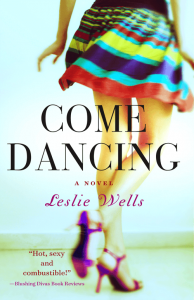
Laura also did the interior design, and let me choose from a selection of typefaces and chapter head ornaments. I went to several online reviewers (whom I did not know) to ask if they would be able to provide early quotes, and two generous people gave me nice blurbs. Then I wrote my own jacket copy. I figured out how to upload the book online (with help from my teenager). And once it was up, I e-mailed every single person I knew and asked them to buy it.
Next I set up a Goodreads giveaway, and I paid for a few inexpensive ads on websites that promote e-books. The most difficult thing for me was figuring out the features of the various retail and promotional websites, since I’m not tech literate.
To my surprise, one week after it was published, Come Dancing hit #13 on Amazon’s Hot New Releases list for Fiction/Humor and made the Amazon Best Seller list. It also hit #1 in the Kindle Store for Romantic Comedy.
It’s early days yet—my book has only been out for two weeks at the time of this writing—but so far, the experience has been amazing. Most authors want a shot at being published by a traditional publisher, and I certainly understand that impulse. But if that doesn’t happen for you, going the indie route can be extremely satisfying.
The post Both Sides Now: A New York Editor and Author Goes Indie appeared first on Jane Friedman and was written by Leslie Wells.
June 27, 2014
How to Create Your First Booktrack (and Get 2,000 New Readers)
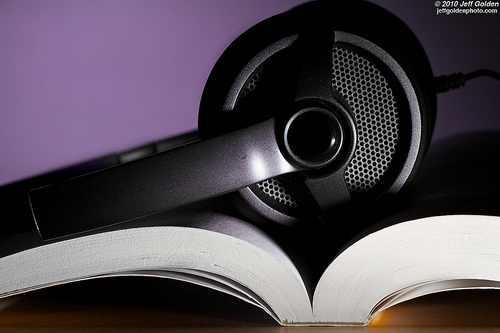
Photo by Jeff Golden / via Flickr
Today’s guest post is by author Laurence MacNaughton (@LMacNaugton).
When I first heard about Booktrack.com from my literary agent, Kristin Nelson, I was fairly skeptical of the idea. Ebooks with music and sound effects, really?
But then I tried the Booktrack of the short story Dagon by H.P. Lovecraft. I’ll be honest—I was blown away. Hearing the waves lap against the side of the castaway’s lifeboat, hearing his footsteps trudging through the sand, listening to the ominous music building to a crescendo as he explored the ancient ruins …
It was a fantastic experience, and I was instantly hooked.
The first thing I did was email Hugh Howey and every other author I know, and say, “You have got to do this.”
Not only is it a bold new way to share your story, it’s actually wickedly fun to create a Booktrack.
From radio DJ to Booktrack star
Many years ago, I was a radio DJ, and I used to sit in the sound booth between shows to record promos. I’d spend hours tinkering with the tapes to get a sound effect or music clip just right, trying to make it funnier or snappier. It was grinding work.
But now, you can let software handle the drudgery, and that leaves you more time to be creative. Although the interface on Booktrack doesn’t look sophisticated, it’s more than powerful enough to get the job done, and do it well.
Plus, it’s easy to upload your text. If you don’t want to commit to using one of your own stories right away, you can select a classic like Dracula or A Tale of Two Cities from the Booktrack archive.
Choose your sounds carefully
Just highlight some of your text and a pop-up window allows you to instantly add music or sound effects. You can search through Booktrack’s well-appointed library, or upload your own sounds and music.
If you’re picky like me, you’ll spend hours sorting through sounds to find just the perfect one. The sound of footsteps scraping across gritty concrete is distinctly different from the sound of someone walking through tall grass.
Use a soft touch
When you’re creating your first Booktrack, the biggest stumbling block is a tendency to be too heavy handed with the music and sound effects. A little goes a long way, and you don’t want to abuse the reader with a muddy overload of noise. Season the story with just enough sound to bring out its full potential. You want to end up with something that’s greater than what you started with.
Remember: there isn’t any dialogue
The slightly odd thing about a Booktrack is that there aren’t any voice actors to record dialogue. While you have plenty of excellent sounds, you have no actual voices. That’s why the stories that make the best Booktracks usually start with at least a page of action and description before we get to any really thick dialogue.
You want to give the reader a chance to become emotionally immersed in the story, and comfortable in the soundscape, before the characters start talking on the page.
Hook new readers with your story
On average, more than 1,500 readers check out each of my Booktracks, and rate them an average of 4.5 stars. And those numbers are going up. As I write this, my new Booktrack The Spider Thief has been read almost 2,400 times. One reader, Shelley Lee Riley, commented, “Wow. I’m hard to please and I loved this. I’m going to have to buy the rest of it!”
If you have a short story or a dramatic opening chapter, consider turning it into a Booktrack to catch the attention of new readers.
The sound of the future
As you become more comfortable with the sound of your stories, you may find yourself occasionally rethinking your scenes as you write. You’ll want to include more description, atmosphere, and action. It’s much more cinematic that way.
Creating a Booktrack is an exciting process. I admit that I could happily spend all day adding sound to my stories, if I didn’t have more books to write. Give it a try, and you’ll see what I mean.
The post How to Create Your First Booktrack (and Get 2,000 New Readers) appeared first on Jane Friedman and was written by Laurence MacNaughton.
June 26, 2014
Book Marketing: It’s About Data, Not Promotion [Smart Set]

Welcome to the weekly The Smart Set, where I curate new smart reads about the publishing and media industry. I also point to issues and questions raised, and welcome you to respond or ask your own questions in the comments.
“To seek: to embrace the questions, be wary of answers.”
—Terry Tempest Williams
Scared Money Never Wins by Chris McVeigh
After attending an industry event in London, consultant Chris McVeigh argues that marketing in traditional book publishing in broken and largely fails authors. He writes:
It isn’t broken because the people working in marketing departments are stupid or lazy, it’s broken because they’re under-resourced, badly trained and over-stretched. There are too many books coming across their desks every month for anything more than a cursory, tick box approach to be taken for the majority of titles. In the face of incredibly tough market conditions which have seen competition and technological disruption from almost every direction – many publishers have lost their way and lost their nerve. As an industry I think we’ve become timid and our marketing reflects that.
McVeigh goes on to say that publishers are excellent at promotion when they realize they have a hit on their hands, but that good marketing has nothing to do with promotion. He defines it as data-driven: “It demands a fundamental understanding of data and statistics. It’s often boring. Tediously so. Hours spent hunched over spread-sheets tracking tiny changes to sales copy or plotting graphs of google rankings -v- keyword selection.” Read the full post.
Thoughts & questions:
After reading McVeigh’s post, I think all of us are wondering: Where do we go to learn this kind of marketing? Who is doing this training? And/or who can we hire to do what he’s describing? He promises another post that will perhaps offer insight.
I do know of one outfit that is focused on data-driven marketing: Logical Marketing, a partnership between Pete McCarthy and Mike Shatzkin. It would be wonderful if they offered a boot camp on this topic. I’d be first in line.
Nostalgia and Newspapers by Clay Shirky
Shirky, a well-known figure in digital publishing/futurist circles, doesn’t often write blog posts, but when he does, you immediately see evidence of it on social media, with people responding, sharing, and debating. Last week, Shirky pointed a finger at adults who are “lying” to young people (specifically college students studying journalism/media) about the future of print. He writes:
The most important fight in journalism today isn’t between short vs. long-form publications, or fast vs. thorough newsrooms, or even incumbents vs. start-ups. The most important fight is between realists and nostalgists. …
A year or so ago, I was a guest lecturer in NYU’s Intro to Journalism class, 200 or so sophomores interested in adding journalism as a second major. (We don’t allow students to major in journalism alone, for the obvious reason.) One of the students had been dispatched to interview me in front of the class, and two or three questions in, she asked “So how do we save print?”
I was speechless for a moment, then exploded, telling her that print was in terminal decline and that everyone in the class needed to understand this if they were thinking of journalism as a major or a profession.
Thoughts & questions:
I detect some of the same nostalgia at work in book publishing, as many people emphasize the “leveling off” that has occurred with ebook sales/adoption. However, as with newspapers/magazines, print books too are in terminal decline.
Self-published books + library distribution: a selection of pieces
In the last few months, more channels have opened up for self-published authors to get their ebooks distributed and available within library systems. However, even for someone like myself, I find it really hard to drill down to the facts of what’s possible for authors and how these systems work. Here are a few places to catch up on what’s happening:
OverDrive Carries Self-Published Books, But Don’t Worry, They’re in a Ghetto (Passive Voice): Rather than sending you to the original piece, I’m linking to Passive Voice because of the valuable comment thread. In a nutshell: Smashwords has an agreement with OverDrive (which distributes ebooks to libraries) to distribute its titles. However, how those titles are (so far) labeled and discovered in the system has worried some indie authors. Mark Coker of Smashwords responds to concerns in the comments section. Be sure to read the discussion for the full scope of what’s happening, and understand the situation is very fluid.
BiblioBoard and Library Journal have launched a self-pub ebook discovery service called Self-E. The Digital Reader has a good overview of the program.
Getting Your Self-Published Book Into the Library, Tips from Librarian Marlene Harris (Lindsay Buroker). This piece is a couple years old now, but offers valuable tips and insight.
Thoughts & questions:
If you have any experience with distribution to libraries—or know of helpful articles—please leave a comment!
The post Book Marketing: It’s About Data, Not Promotion [Smart Set] appeared first on Jane Friedman and was written by Jane Friedman.
June 19, 2014
The Healthy Profits of Traditional Publishers [Smart Set]

Welcome to the weekly The Smart Set, where I curate new smart reads about the publishing and media industry. I also point to issues and questions raised, and welcome you to respond or ask your own questions in the comments.
“To seek: to embrace the questions, be wary of answers.”
—Terry Tempest Williams
How Much Money the Biggest Publishers Actually Make by Digital Book World
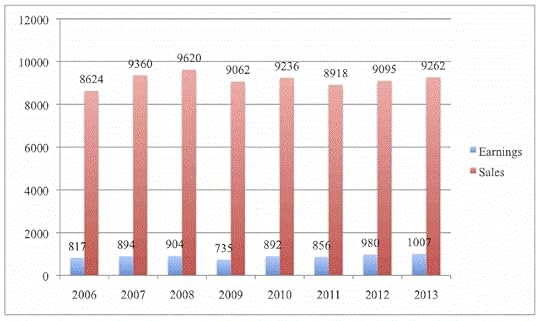
The Publishers Marketplace 5-Publisher Index: Sales and Operating Earnings, 2006–2013
Publishers Lunch/Marketplace recently graphed the last eight years’ worth of earnings from the Big Five publishers. For all the talk of traditional publishing on its way to the grave—or threatened by self-publishing—their profit earnings (and margin) are on the rise: at 10.7% in 2013. As Digital Book World points out: “By comparison, last year Barnes & Noble had a net profit margin of -2.3% and Amazon had a net profit margin of 0.37%.”
Thoughts & questions:
As Digital Book World points out, the rise of ebooks helped publishers maintain their sales level but increase profits, in part due to a lower author royalty. The close of Borders actually helped publishers’ profits due to a lower return rate.
Hachette is one of the Big Five and now engaged in a well-publicized dispute with Amazon over terms. Many authors (and others) have called Amazon a bully; some have argued the Amazon-Hachette dispute is a moral issue and that—if Amazon triumphs in its dispute—it may hurt the future of quality books and author livelihoods. True?
Hachette Reveals Amazon Digital Sales Share by Lisa Campbell
Many news sites were sharing information from a recent investor day presentation by Hachette, which reveals that Amazon has a 78% market share of Hachette ebook titles in the UK and a 60% share in the US.
The other retailer percentage shares in the US:
Barnes & Noble: 19% share
Apple iBooks: 13% share
Kobo and Google share 8% of the pie
Thoughts & questions:
Based on anecdotal evidence and industry presentations I’ve seen, these percentages match most people’s guesses or assumptions of the overall ebook market share by retailer.
Most argue that Amazon’s share will start increasing due to lack of competition. Check out this piece by Jane Litte from earlier this year, about whether competitors have effectively ceded the market to Amazon.
Self-Publishing Boom Lifts Sales By 79% in a Year by Alison Flood
This is a report on the UK, not the US. I’m not as interested in the 79% figure as I am in the following estimate: self-published books account for 5% of the total units bought, and 3% of the dollars spent last year in the UK on books.
Thoughts & questions:
Those who follow AuthorEarnings would be quick to point out that Nielsen only tracks books with ISBNs, which doesn’t include many thousands of self-published titles. AuthorEarnings reports that self-published titles are closer to one-quarter of unit sales—within specific genres.
If comparing the health of traditional publishing with the boom in self-publishing, one might reasonably conclude we’re not playing a zero-sum game. In other words: if self-publishing wins, that doesn’t mean traditional publishing loses, and vice versa.
The post The Healthy Profits of Traditional Publishers [Smart Set] appeared first on Jane Friedman and was written by Jane Friedman.
June 18, 2014
What Every Self-Published Author Needs to Know About Taxes

by Jason Mrachina / Flickr
Note from Jane: Today’s guest post is by attorney Helen Sedwick (@helensedwick), an attorney licensed to practice in California only. She just released the Self-Publisher’s Legal Handbook, now available in ebook and paperback formats.
This information is general in nature and should not be used as a substitute for the advice of an attorney authorized to practice in your jurisdiction.
Most writers don’t realize that their memoir, short story collection, children’s book, or novel could mean money in their pockets, even if sales are disappointing.
Suppose you spend $5,000 hiring editors, designers, and other freelancers to publish your book. At the end of the year, you’ve made $2,000 in sales, which you offset with $2,000 of expenses. Can you deduct the remaining $3,000 from your “day job” income and reduce your income taxes?
Yes, if you treat your writing as a business and not a hobby.
U.S. tax code encourages new businesses by permitting entrepreneurs to offset losses from one business from other income as long as the owner has a serious intent to operate the business at a profit. The IRS wants you to succeed, so they can tax your income later.
For a long time, the IRS followed the rule that an income-producing activity was considered a hobby unless it showed a net profit during three out of five years. (If your writing is a hobby, then you may deduct book-related expenses only from book-related income.)
In practice, the hobby rule is not that strict. If you have a serious intent to make a profit from your writing (and quit your day job), a little advanced planning and discipline will help convince the IRS you’re an entrepreneur.
Treat your venture as a business.
Set up a website and advertise. Print business cards and bookmarks. Promote yourself and your book on social media and other venues. Hire experts to advise you. If you don’t treat your writing as a business, no one else will.
There is no need to incorporate or form a business entity. Your business is just as legitimate as a sole proprietorship. Maintaining an entity is simply too expensive, unless you are making $5,000 or more in net income. In that case, don’t worry about hobby rules, but discuss forming an entity with a tax professional to save on self-employment taxes.
Give your business a name.
Having a name helps you and others separate the business from your personal activities. File a Fictitious Business Name Statement (also called a DBA, doing business as, filing) with your local county. I suggest using a service, such as the DBA Store.
Obtain a Federal Employer Identification Number (EIN).
Even if your business is a sole proprietorship and you never have employees, get a separate EIN, the equivalent to a Social Security Number for your business. Be sure you go directly to the IRS website. Sham sites that look like the IRS site are popping up every day. They ask for your Social Security Number, mother’s maiden name, birthday—all the tools for stealing your identity. Don’t use them!
Apply for a resale certificate.
Unless you live in a state that does not charge sales tax, obtain a resale certificate, sometimes called a seller’s permit. Put the certificate in the name of your company and use your new EIN.
Find out if you need a local business license.
Many cities and counties require some businesses to obtain a business license. Search for “business license” and the city and county where your business is located. The Small Business Administration website has helpful links.
Invest time and effort into making a profit.
Attend conferences, and even better, speak at them. Join and host readings. Arrange school visits. Keep working on new books. Pitch new projects.
Follow tax rules.
If in any calendar year you pay an independent contractor (other than a corporation) $600 or more for services or $10 or more in royalties, ask the freelancer for a W-9 and report the payments on a 1099-MISC and the equivalent state form. This does not apply to payments to a corporation such as BookBaby, CreateSpace, or Lightning Source.
Report your business income and expenses on a Schedule C. If you have kept separate financial records, this is easy.
If your net income (gross revenues less deductions) from writing and self-publishing is $400 or more in any year, you may be required to pay self-employment tax on that income. If taxes on that income exceed $1,000 per year, you may be required to pay quarterly estimated taxes. Once you have reached this level of success, it’s time to consult a tax professional.
Separate personal finances from business finances.
Set up separate bank accounts and credit cards to cover business income and expenses.
Don’t jump the gun.
Wait until you have reasonable writing income before “launching” the business for tax purposes. Limit your deductions to those related to your self-published book or freelancing efforts. If you try to deduct ten years of writing conferences, you are inviting IRS scrutiny.
Maintain good business records.
In tax audits, more people are nailed for losing receipts than for cheating. If you don’t have a file cabinet (real or virtual) dedicated to your writing and self-publishing business, then get one. Invest in a simple business accounting software program.
Keep all records for seven years. Some people say three, but I suggest seven years to support your position that writing is your business.
What records to keep:
receipts
royalty statements
sales slips for direct sales (the ones you make at conferences and readings)
appointment books
brochures, business cards and handouts from conferences
manuscript critiques
thank-you notes from libraries or schools after readings
fan email
contest entries and notifications
correspondence with freelancers, whether or not you hire them
letters from agents and publishers, including rejections
bank and credit card records
printouts of PayPal summaries
W-9s and 1099s
sales tax returns
Final note
This tactic won’t work forever. If you have too many years of losses, the IRS is likely to question you or audit your returns. So don’t go overboard.
This nitty-gritty is the unromantic side of writing. But take the time to do it right, and you could save enough taxes to enjoy several lovely, romantic dinners, if not a wonderfully passionate vacation.
Disclaimer: Helen Sedwick is an attorney licensed to practice in California only. This information is general in nature and should not be used as a substitute for the advice of an attorney authorized to practice in your jurisdiction.
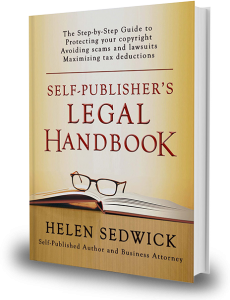 Note from Jane: I highly recommend the Self-Publisher’s Legal Handbook. I received an advance copy and found the information useful and essential for just about any author. Click here to learn more and download a sample.
Note from Jane: I highly recommend the Self-Publisher’s Legal Handbook. I received an advance copy and found the information useful and essential for just about any author. Click here to learn more and download a sample.
The post What Every Self-Published Author Needs to Know About Taxes appeared first on Jane Friedman and was written by Helen Sedwick.
Jane Friedman
- Jane Friedman's profile
- 1882 followers


